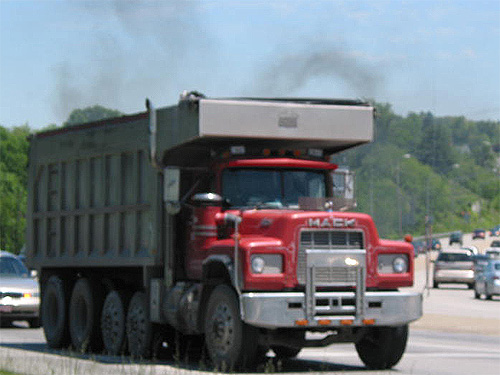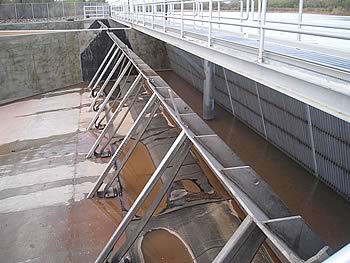We can make significant gains by becoming more efficient.
The quickest and most profitable way to move away from fossil fuels is to use less or get much more work from the same amount. By not wasting energy, by building an energy efficient world, residential, commercial and industrial sectors also save money. Energy efficiency bridges to the foreseeable future when solar and other renewables become cost-competitive, and distributed energy is widespread. Greenhouse and toxic gases quickly diminish with energy efficiency and reduce power line congestion and blackouts.
Energy efficiency can be most cost-competitive in the oil and gas industries, methane production, the building and transportation sectors, the construction of high voltage lines, pumping and purifying water, land use planning, and saving wasted heat.
What Needs to Change
Oil and Gas

Twenty percent of New Mexico’s greenhouse emissions (27 MMTCO2e) come not from making electricity, heating or cooling homes or driving cars, but from mining, extracting and processing fuels: natural gas processing plants, pipe leaks, gas injection plants, fluid-cracking plants and more.
The more efficient the industry, the more gas it should have available to sell.
Methane

The largest, most effective industry effort to reduce greenhouse gases would focus on the reduction of methane emissions (a natural gas that has more than twenty times the impact of carbon dioxide). During coalbed methane extraction and transport, 36 MMTCO2e enter New Mexico’s atmosphere.
(photo by National Institute for Occupational Safety and Health)
Building Construction

It may seem surprising, but building construction and remodeling comprise one of the top ten most effective ways to save energy and money. Nationally, buildings consume 67% of all the nation’s produced electricity and emit 48% of all its greenhouse gases.
Tools to achieve building energy efficiencies include: weatherizing homes and offices, solar-friendly roofs, daylighting, pre-insulated pipes, laws to prevent solar blockage, special landscaping, green materials, designed ventilation, ground-heat storage, smarter home heating management, micro-combined heat and power, Energy Star Programs, and LEED standards.
In a more energy efficient future, all new buildings and developments are designed to meet greenhouse gas performance standards at 50% reduction of the present New Mexico average for the building type. In any one year, an equal amount of older building square footage will be renovated to meet the same standard established for new buildings. All building should be carbon neutral by 2030 (no greenhouse gas emissions to operate building).
(photo by Bill Jacobus)
High Voltage Lines

After about 100 miles, 7.5 percent (or more) of the electrons speeding through power lines are lost as heat. New Mexico probably loses 350 to 600 MW each year from line losses. No one has calculated these greenhouse gas emissions emitted for no purpose at all. The fewer long-distance power lines, the more energy can actually be deployed and the less greenhouse gas emissions per power plant.
Options include:
- Convert higher voltage power lines to use direct current (HVDC) that is more efficient.
- Replace most new high voltage lines with distributed systems.
- Upgrade small power lines and 69kV.
Pumping, Purifying, and Moving Water

Pumping groundwater for irrigation and pumping water to move it around the state require energy. No one has calculated how many tons of greenhouse gases result from pumping. Santa Fe, for instance, will pump over 8,700 acre-feet of water from the Rio Grande up to the city.
Purifying water also takes energy. The Albuquerque wastewater treatment plant, for instance, receives 54 million gallons per day and extracts the biosolids which, in a bioreactor, generate electricity and heat to save the operation $70,000 per month. Cash and conscience work together.
Farms, Forests, and Urban Growth
Ecologists know that land conversion — from forest and range to urban — increases greenhouse gas emissions per acre. With population growth, settlement patterns can be better planned but come with the political difficulties of changing county and state land use policy, which, at times, seem insurmountable.
(photo by Millicent Bystander)
Options include:
- Good land use patterns which can reduce vehicle miles traveled by 20–40%.
- Conversion cost subsidies to farmers in order to lower greenhouse gas emissions.
- Incentives for forest and rangeland managers to adopt new policies that adapt to climate change.
Heat

When energy users waste electricity or gas, the waste is most often heat. By weatherizing homes, homeowners can save 40% on their bills. Gasoline in our cars produces 85% waste heat and only 15% mechanical energy to make the car move. Hybrids and plug-ins can reduce the waste heat losses by 60%. By placing heat and power in one industrial gadget called a combined heat-and- power (CHP) co-generator, industries can cut greenhouse emissions by two-thirds and save up to 75% on electricity and heating bills.
Minimize heat loss when there is “waste” heat, and treat it as a resource to do more things.
(photo by sillygwailo)
